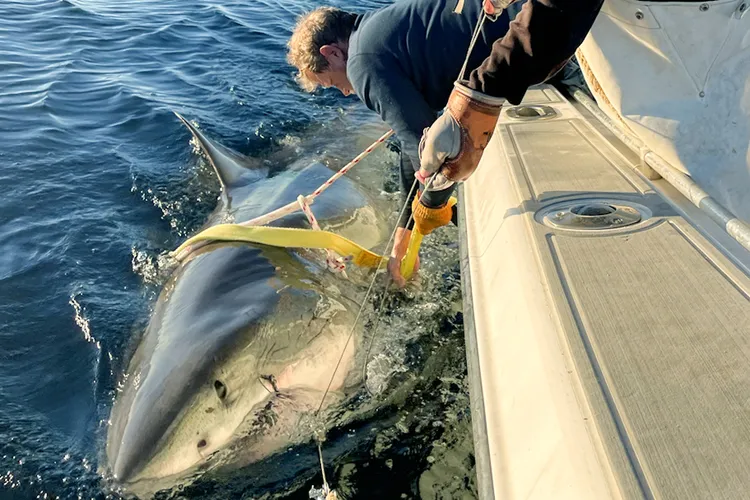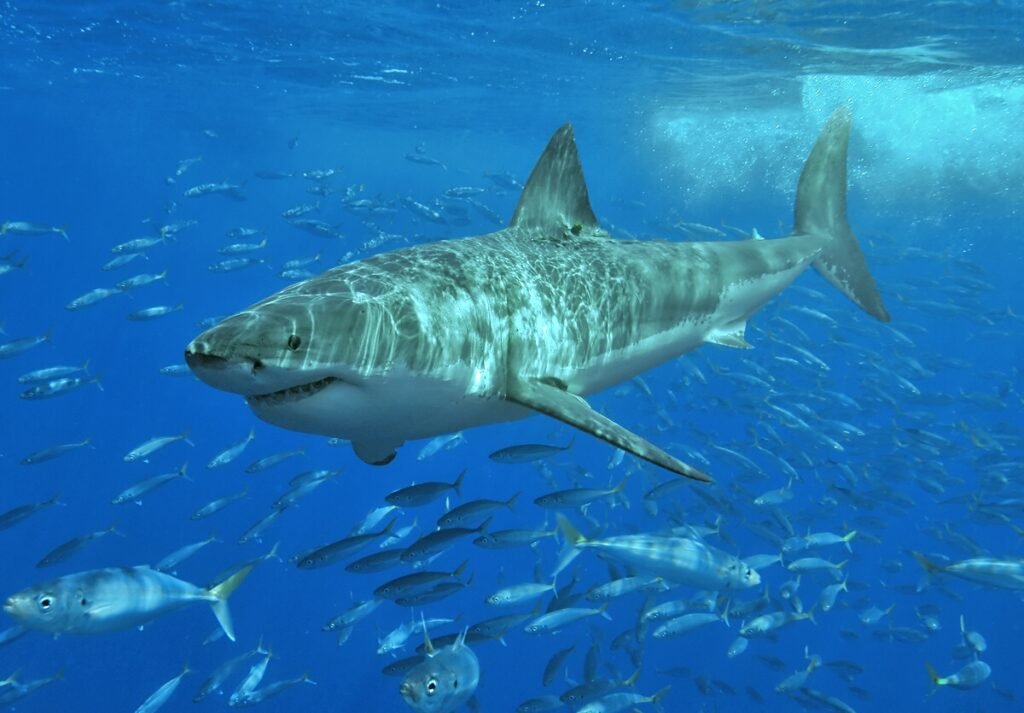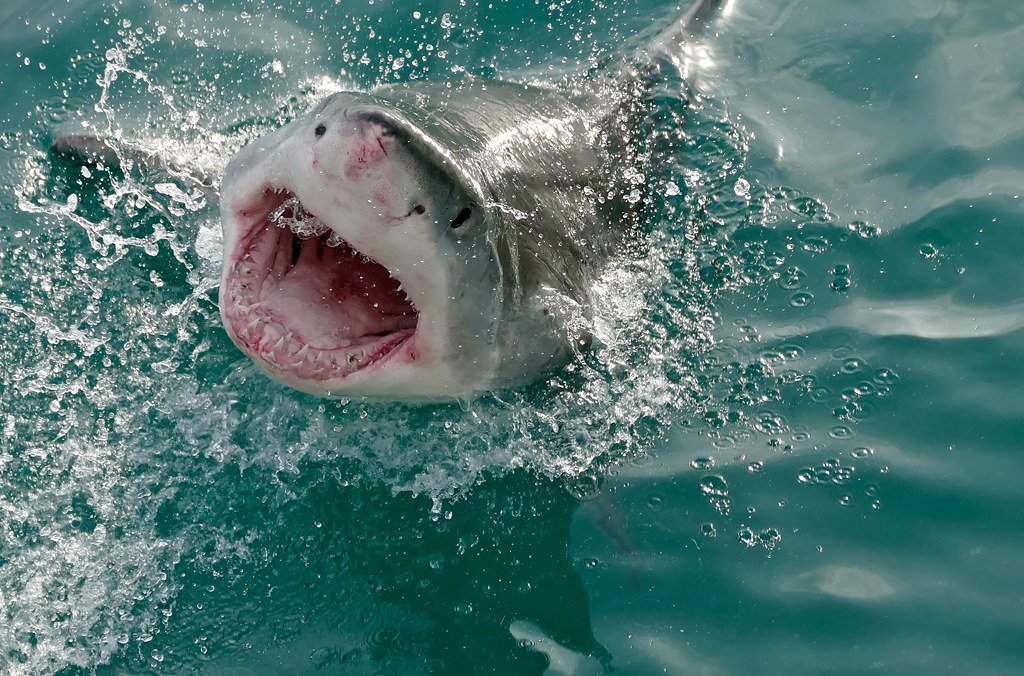On October 4, 2025, marine scientists got a jolt: Contender, the massive great white shark whose every ping commands attention, surfaced in an unexpected corner of the Atlantic. People.com After months without a signal, his tag lit up near Anticosti Island, Quebec, in the Gulf of St. Lawrence—a spot far north of where he’s usually tracked. People.com For those watching the ocean’s mysteries, it felt like a message: the ocean still holds surprises.
Before this, his last confirmed location was off Nantucket, Massachusetts, back in July, following a path familiar to many tagged sharks along the U.S. East Coast. But now he had crossed nearly 857 miles in one jump, averaging about 12 miles per day.
Why this northern move raises eyebrows

For researchers from OCEARCH, this ping was more than a fluke—it challenged assumptions. Great whites are known to roam large distances, but signals this far north are rare. People.com John Tyminski, a senior data scientist at Ocearch, speculated that warmer sea temperatures and a rich prey supply—schools of fish, seals—may have lured Contender into the Gulf. People.com In short: food and conditions may trump “usual territory.”
Even more, his reappearance highlights how little we still understand about the full reach and flexibility of these apex predators. Each new location can rewrite parts of the map scientists thought they knew.
The legend behind the name: Contender
Contender first burst into public attention in January 2025, when Ocearch tagged him as a male great white measuring 13 ft 8 inches and weighing 1,652.8 lb—making him at that time the largest male great white ever tracked in the Northwest Atlantic. People.com+1 From that moment, every movement has mattered.
His mission, if you will, is to provide real-time insights into migration, behavior, and survival strategies. Ocearch plans to monitor him for about five years, hoping his data will help unlock patterns that can guide conservation.
When Contender dives or surfaces, it’s not just science—it’s storytelling. The ocean is writing chapters about climate shifts, food webs, and predator dynamics—and Contender is one of its main narrators.
What this resurgence means—for sharks and for us

Contender’s northern sojourn is a powerful reminder: the ocean’s giants are agile, adaptable, and ever unpredictable. Every ping matters.
For conservationists, his path may hint at changing ocean dynamics. If sharks venture farther in search of food, it could reflect shifting currents, prey migrations, or warming seas. Protecting their corridors will need more foresight than ever.
Moreover, Contender’s journey raises a deeper question: how do we ensure that such majestic creatures survive in seas increasingly challenged by human activity? Tracking gives us a window—but not a shield.
In the end, Contender’s sudden reappearance in those chillier northern waters is more than a surprise—it’s an invitation. An invitation to pay closer attention, protect harder, and treat these ocean wanderers not as curiosities, but as vital guardians of balance in a fragile marine world.

Hi, I’m Andrew, and I come from India. Experienced content specialist with a passion for writing. My forte includes health and wellness, Travel, Animals, and Nature. A nature nomad, I am obsessed with mountains and love high-altitude trekking. I have been on several Himalayan treks in India including the Everest Base Camp in Nepal, a profound experience.



